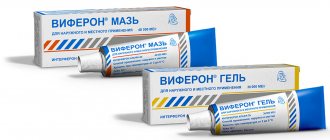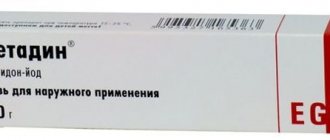Contraindications
The use of Isoniazid is contraindicated, regardless of the route of administration, in case of intolerance to the drug, epilepsy and other diseases accompanied by a tendency to seizures, in the case of previous polio, impaired renal and liver function, severe atherosclerosis.
The use of the drug in a dose of more than 10 mg/kg is contraindicated during pregnancy, pulmonary heart failure of the III degree, hypertension of the II-III degree, coronary heart disease, widespread atherosclerosis, diseases of the nervous system, bronchial asthma, psoriasis, eczema in the acute phase, cirrhosis of the liver , myxedema. Intravenous administration of isoniazid is also unacceptable for phlebitis.
Pharmacokinetics[edit | edit code]
Both when taken orally and when administered intramuscularly, isoniazid quickly enters the bloodstream. Antacids containing aluminum make it difficult to absorb the drug in the gastrointestinal tract. After oral administration at the usual dose, the maximum serum concentration is reached after 1-2 hours and is 3-5 mcg/ml.
Isoniazid easily penetrates cells and biological fluids and accumulates in areas of caseous necrosis. It is found in significant amounts in pleural effusion and ascitic fluid; in meningitis, the concentration of the drug in the CSF is approximately equal to the serum concentration (Holdiness, 1985). In infected tissues, isoniazid accumulates gradually (at first its content there is lower than in muscles and blood) and remains for a long time in a concentration significantly exceeding the MIC.
From 75 to 95% of the administered dose of isoniazid is excreted in the urine within 24 hours, mainly in the form of metabolites. Among the latter, the products of acetylation (acetylisoniazid) and enzymatic hydrolysis (isonicotinic acid) predominate. In addition, small amounts of isonicotinic acid conjugates (probably a glycine conjugate), one or more isonicotinic acid hydrazones, and trace concentrations of N-methylisoniazid are found in the urine.
There are genetically determined individual differences in the rate of isoniazid acetylation, caused by different activities of acetylating enzymes (Evans et al., 1960). The rate of acetylation greatly affects the serum concentration of the drug and its T1/2. The distribution curve of acetylating enzyme activity among the population has two peaks; accordingly, individuals with high and low activity of these enzymes are identified (Fig. 48.1).
Figure 48.1. Two-humped distribution of serum concentration and T1/2 of isoniazid (according to Finnish researchers)
The rate of acetylation does not depend on gender and age, but depends on ethnicity. High activity of acetylating enzymes is characteristic of Eskimos and Japanese, low - for Scandinavians, Jews, and the white population of North Africa. Among Americans, the proportion of people with low acetylating enzyme activity is approximately 50%. Since high enzyme activity is encoded by the dominant allele of an autosomal gene, it is observed in both homo- and heterozygotes of the given allele. The average serum concentration of active isoniazid in such people is 2-3 times nothing in people with low activity of acetylating enzymes and the therapeutic effect may be insufficient. Since isoniazid rarely causes side effects, the dose can be increased in people with high activity of acetylating enzymes. In the general population, T1/2 of isoniazid ranges from 1 hour or less to 4 hours or more (Fig. 48.1). In individuals with low activity of acetylating enzymes, T1/2 is 2-5 hours, and in individuals with high activity of acetylating enzymes - an average of 70 minutes. In case of liver failure, T1/2 of isoniazid is prolonged. In patients with low activity of acetylating enzymes who suffer from liver failure, the dose is reduced.
Renal function has little effect on the elimination of isoniazid, however, in patients with low activity of acetylating enzymes with renal failure, the concentration of the drug may increase to a toxic level. At a dose of 300 mg/day, the drug is safe at plasma creatinine concentrations of less than 12 mg%, or 1.1 mmol/l (Bowersoxet al., 1973).
Directions for use and doses
Isoniazid is used intravenously, intramuscularly, in the form of inhalations, and possibly intracavernous administration. The daily and course doses of isoniazid are set for each patient individually, depending on the nature and form of the disease, the degree of inactivation and tolerability of the drug.
Intravenous isoniazid is administered for the treatment of widespread pulmonary tuberculosis, with massive bacterial excretion, concomitant diseases of the gastrointestinal tract, and in patients who avoid taking the drug orally. Adults and adolescents are administered slowly in drops of 10-15 mg per 1 kg of body weight per day. The course of treatment, depending on the effectiveness of therapy and tolerability of the drug, is 30-50 infusions. To prevent side effects when administering isoniazid intravenously, vitamin B6 (pyridoxine) and glutamic acid are used. Pyridoxine is administered intramuscularly 100-125 mg 30 minutes after administration of Isoniazid, or prescribed orally 60-100 mg every 2 hours after intravenous administration of Isoniazid. Glutamic acid is taken in a daily dose of 1 to 1.5 g. After intravenous administration of the drug, bed rest is required for 1-1.5 hours.
Adults and adolescents are administered intramuscularly in a 10% solution at 5-12 mg/kg per day for 2-5 months. To reduce the side effects of this route of administration, pyridoxine is prescribed orally along with the administration of Isoniazid at a dose of 60-100 mg (can also be administered intramuscularly 30 minutes after Isoniazid at a dose of 100-125 mg/kg).
In order to reduce side effects, in addition to the above-mentioned pyridoxine and glutamic acid, 1 ml of thiamine bromide (6% solution) or thiamine chloride (5% solution) is administered intramuscularly, and the sodium salt of ATP is prescribed.
Inhalation isoniazid is prescribed in 1-2 doses in a 10% solution.
The daily dose is 5-10 mg per 1 kg of body weight. Inhalations are used daily for 1-6 months.
Mainly for adults with fibrous-cavernous and cavernous forms of tuberculosis, with bacterial excretion and in the preoperative period, a 10% solution of the drug in a daily dose of 10-15 mg/kg is administered intracavernously.
Isoniazid[edit | edit code]
Isoniazid (isonicotinic acid hydrazide) remains the mainstay of treatment for tuberculosis. If well tolerated, isoniazid is prescribed to all patients with tuberculosis (provided that the pathogen is sensitive to the drug).
Historical background[edit | edit code]
Isoniazid was discovered almost by accident. In 1945, Shorin showed that nicotinamide has a bacteriostatic effect on Mycobacterium tuberculosis. Further research revealed that many pyridine derivatives, including isonicotinic acid derivatives, have the same effect. Knowing that thiosemicarbazones also inhibit the growth of Mycobacterium tuberculosis, scientists attempted to synthesize isonicotinic aldehyde thiosemicarbazone. The starting material for the synthesis was isonicotinic acid methyl ester, and the first intermediate product was isonicotinic acid hydrazide, that is, isoniazid. The history of this interesting discovery is given in a review by Fox (1953).
Chemical properties[edit | edit code]
Isoniazid is isonicotinic acid hydrazide. Its structural formula is as follows:
Structural formula of isoniazid
The isopropyl derivative of isoniazid, and proniazid (1-isonicotinyl-2-isopropylhydrazide), also inhibits the growth of Mycobacterium tuberculosis. Being a powerful MAO inhibitor, iproniazid was not used as an anti-tuberculosis drug due to its side effects, but became the founder of one of the groups of antidepressants (Chapter 19).
Antimicrobial activity[edit | edit code]
Isoniazid has a bacteriostatic effect on resting mycobacteria, and a bactericidal effect on rapidly dividing mycobacteria; The MIC is 0.025-0.05 μg/ml. Before reproduction stops, mycobacteria have time to undergo one or two divisions. Isoniazid is highly selective against mycobacteria; The MIC for other microorganisms exceeds 500 μg/ml.
In animal experiments, isoniazid was much more effective than streptomycin. Unlike the latter, isoniazid easily penetrates cells and has an equally good effect on mycobacteria located intra- and extracellularly.
Among atypical mycobacteria, only Mycobacterium kansasii is usually sensitive to isoniazid. However, in any case, it is necessary to determine the degree of sensitivity of the pathogen, since the MIC can be quite high.
Stability[edit | edit code]
Cultivation of Mycobacterium tuberculosis in the presence of increasing concentrations of isoniazid leads to the rapid selection of resistant strains capable of growing even at very high concentrations of the drug. Cross-resistance to other anti-tuberculosis drugs is not typical (the exception is ethionamide, since it is structurally similar to isoniazid). The main mechanism of resistance is mutation of the gene encoding the bacterial enzyme catalase-peroxidase. A defect in this enzyme prevents the conversion of isoniazid to the active metabolite (Blanchard, 1996). Another mechanism of resistance is due to a missense mutation in the bacterial inhA gene, responsible for the synthesis of mycolic acids (Baneijee et al., 1994).
Mutations that cause resistance to isoniazid occur with a probability of approximately 1 in 106, and since the tuberculosis cavity contains many more pathogens (10 -10 ), against the background of isoniazid monotherapy (as with any other anti-tuberculosis drug), a rapid selection of resistant strains occurs. Sometimes an initially sensitive strain is replaced by a resistant strain within just a few weeks of treatment. In the United States, until recently, the prevalence of primary resistance of Mycobacterium tuberculosis to isoniazid remained at 2-5%. Now this figure has increased to 8%. Moreover, in large cities, coastal and border areas, and in some populations among Asians and Hispanics, it may be much higher (Centers for Disease Control and Prevention, 1999; Iseman, 1993).
Interaction with other drugs
If necessary, isoniazid is prescribed in combination with other anti-tuberculosis drugs - antibiotics, sulfonamides (except cycloserine).
With the simultaneous use of Isoniazid with drugs that have hepatotoxic properties, the likelihood of hepatotoxic reactions increases. When used simultaneously with rifampicin, the risk of developing these reactions increases (especially in people with impaired liver function and in patients with alcoholism). When used simultaneously with paracetamol, the risk of hepatotoxicity increases. With the simultaneous use of isoniazid with carbamazepine or phenytoin, the metabolism of the latter is suppressed, which leads to an increase in their concentrations in the blood plasma and increased toxic effects. To prevent the development of these phenomena, pyridoxine and glutamic acid are prescribed.
Cautions
Simultaneous consumption of alcohol increases hepatotoxic reactions.
Mechanism of action[edit | edit code]
Already in 1975, it was suggested that isoniazid inhibits the synthesis of mycolic acids, an important component of the mycobacterial cell wall (Takauata et al., 1975). Mycolic acids are found only in mycobacteria, so isoniazid has no effect on other microorganisms. The mechanism of action of isoniazid is complex; Resistance to the drug may be based on mutations in at least five bacterial genes (katG, inhA, ahpC, kasA and ndh). According to numerous data, the main target of isoniazid is the product of the inhA gene, an enoyl (acyl transfer protein) reductase involved in the synthesis of mycolic acids. This enzyme is part of fatty acid synthase II and converts D2-unsaturated fatty acids into saturated fatty acids (Vilcheze et al 2000). Isoniazid disrupts the synthesis of mycolic acids; in the cell wall the content of lipids extractable with methanol decreases, and mycobacteria lose acid resistance.
Use of the drug Isoniazid in the treatment and prevention of tuberculosis in children.
Representative office of "Yuria Pharm"
Instructions for the drug Isoniazid>>
Ukrainian Pulmonological Journal. 2008, No. 3. Appendix, p. 36-37
O. I. Bilogortseva, V. P. Kostromina, V. A. Strizh, N. V. Simonenkova, A. A. Otroshchenko, A. E. Sivachenko, A. O. Verbnyak
APPLICATION OF INSONIAZID IN THE FORM OF SYRUP IN THE TREATMENT AND PREVENTION OF TUBERCULOSIS IN CHILDREN
State Institution "National Institute of Phthisiology and Pulmonology named after F. G. Yanovsky of the Academy of Medical Sciences of Ukraine"
Every year, about 9 million new cases of tuberculosis are registered worldwide. About 1 million (11%) are children under 15 years of age.
Of these, 75% are reported in 22 countries with high TB prevalence, accounting for approximately 80% of pediatric TB cases reported worldwide. In general, in different countries, children account for from 3 to 25% or more of the total number of people with tuberculosis [5].
The main method of complex treatment of patients with tuberculosis is etiotropic (antimycobacterial) therapy. The most effective drugs include isoniazid, which is used both in complex combination treatment of patients and in chemoprophylaxis [3, 4].
Preventative treatment, as a way to prevent tuberculosis, is used throughout the world. Chemoprophylaxis regimens differ mainly in the duration of treatment and range from 3 to 12 months in different countries. Isoniazid (and its analogues) is the only drug that is used independently without combination with other anti-tuberculosis drugs [4, 5].
In Ukraine, the population of children at risk who are under the supervision of a pediatric TB specialist, undergo appropriate examinations and, in the vast majority, preventive treatment, amounts to about 200 thousand people annually. Considering the duration of treatment and the age characteristics of the child, it is important to use a convenient form of the drug [2].
In the treatment of patients, isoniazid is mainly used from domestic manufacturers: tablet forms, solution for parenteral use and isoniazid in syrup. The latter is increasingly used in pediatric practice.
Isoniazid is especially active against strains of TB bacilli that multiply rapidly and are found in the walls of the cavity in an oxygen-rich environment at a neutral pH. Isoniazid inhibits DNA-dependent RNA polymerase and inhibits the synthesis of mycolic acids in the cell wall of Mycobacterium tuberculosis (MBT). The drug has high bacteriostatic and bactericidal activity against MBT - their growth is delayed at an isoniazid concentration of 0.03 μg/ml. M. tuberculosis and M. tuberculosis and M. Bovis are highly sensitive to isoniazid; it has little effect on pathogens of other infectious diseases.
The drug is well absorbed from the gastrointestinal tract, easily penetrates the blood-brain barrier, into the cerebrospinal fluid, pleural effusion, ascitic fluid, sputum, saliva, lungs, skin, caseous masses. The time to reach maximum concentration in the blood (Tmax) is 1-4 hours. Binding to plasma proteins is up to 10%. Distribution volume 0.56-0.76 l/kg. Tuberculostatic concentration after taking a single dose persists for 6-24 hours. Penetrates the placenta and is excreted in breast milk.
Metabolized in the liver by acetylation. Its rate is genetically determined and determined by the level of N-acetyltransferase activity. Depending on the rate of acetylation, patients are divided into “fast” and “slow” inactivators. In “fast” inactivators, the half-life of isoniazid is 0.5-1.6 hours, and the amount of unchanged substance excreted by the kidneys is less than 10% per day. For “slow” inactivators, respectively, 2-5 hours and more than 10% per day. In newborns, the half-life is 7.8-19.8 hours, in children aged 1.5-15 years - 2.3-4.9 hours. It is excreted by the kidneys mainly in the form of inactive metabolites: within 24 hours, 75-95% of the administered dose is excreted in the urine, a small amount is excreted in the feces [4].
Isoniazid is most effective in fresh acute processes and is indicated for the treatment of active forms of tuberculosis of various localizations in adults and children as the main drug.
In therapeutic doses, isoniazid is well tolerated by patients. In rare cases, adverse reactions may occur: dizziness, nausea, vomiting, gastritis; sometimes - increased fatigue, headache, sleep disturbance, paresthesia, in children - agitation; in some cases, liver function disorders, skin rashes, skin itching, eosinophilia, fever, chest pain are possible; in isolated cases, the development of gynecomastia and dysmenorrhea is possible due to stimulation of the adrenal cortex.
Isoniazid is contraindicated in the presence of hypersensitivity to it. The drug should be prescribed with caution to patients with epilepsy, as well as other diseases accompanied by a tendency to seizures; in case of previous polio; impaired renal and liver function; pronounced atherosclerosis. Taking the drug at a dose above 10 mg/kg is contraindicated during pregnancy, pulmonary heart failure of the III degree, hypertension of the II-III degree, coronary heart disease, widespread atherosclerosis, diseases of the nervous system, bronchial asthma, psoriasis, eczema in the acute phase, chronic renal failure, hepatitis in the acute phase, liver cirrhosis, myxedema.
A comparative study of the effectiveness and safety of the syrup form of the drug was carried out in 60 children with pulmonary tuberculosis aged 6 to 18 years in accordance with the requirements of the State Pharmacological Center of the Ministry of Health of Ukraine for such studies. The study was conducted through an open comparative, parallel clinical study. In 30 children of the main group, a domestic drug was used - Isoniazid, syrup 100 mg / 5 ml. The control group consisted of 30 children, also patients with pulmonary tuberculosis, who received the drug Isoniazid, syrup 50 mg / 5 ml (Canada) also in complex therapy.
Patients of the main group took Isoniazid syrup at a dose of 10 mg/kg (or 0.5 ml/kg) once a day after breakfast every day for 2 months. Patients in the control group received the reference drug Isoniazid, syrup also at a dose of 10 mg/kg (or 1.0 ml/kg) once a day after breakfast every day for 2 months.
Isoniazid syrup was prescribed in complex therapy together with other antimycobacterial agents, namely rifampicin and pyrazinamide.
The study drugs were prescribed to patients as part of complex therapy, which included pathogenetic drugs in an age-specific dose: vitamin B 6 (pyridoxine hydrochloride), glutamic acid, vitamin B 1 (thiamine chloride), sodium salt of adenosine triphosphoric acid (ATP), a hepatoprotective agent based on silymarin. During the study, the following were not allowed: hepato- and neurotoxic drugs, antibiotics, sulfonamides, indirect coagulants, benzodiazepines, phenytoin, carbamazepine, theophylline, MAO inhibitors.
All patients were randomly assigned to the main (30 people) and control (30 people) groups, identical in gender, age, place of residence, duration of the disease and the degree of manifestation of the main clinical signs.
Before including the patient in the study, the following data collected and recorded in the individual registration form were assessed: demographic (gender, age), physical (height, body weight), anamnestic (life and diseases), radiological (radiography of the chest organs, tomography), results clinical examination (examination of the patient, palpation, percussion, auscultation), indicators of blood pressure (BP), heart rate (HR), body temperature (t °), laboratory (general blood count, urine test, biochemical blood test), microbiological (bacterioscopy and culture of sputum or bronchial washings for MBT).
Patients and their parents (guardians) gave informed consent to participate in research and then adequately cooperated with doctors throughout the entire period of treatment and examination.
Observation and examination of patients was carried out in stages: screening (the first 2-3 days upon admission to the clinic) and the entire period of treatment (60 days): days 1-3, 15, 30, 45, 60. The frequency of studies and data recording were carried out in accordance with the developed scheme.
All examination data were entered into the medical history and individual registration form. After the examination, children with a confirmed diagnosis of pulmonary tuberculosis were included in the study and checked for compliance with the inclusion/exclusion criteria given above.
According to the research protocol, the effectiveness of the study drug was assessed according to the following criteria:
— main — dynamics of clinical manifestations of tuberculosis (subjective symptoms and complaints of patients, objective data, laboratory tests); dynamics of radiological data;
- secondary - dynamics of bacterial excretion according to microbiological examination of sputum or bronchial lavage water (in MBT-positive patients).
The effectiveness of the drug was assessed using the above criteria according to the generally accepted effectiveness scale: the drug is effective - the drug is ineffective.
The scale of distribution of signs was graded in points according to the degree of their severity: 0 - absence of a sign, 1 - weak degree of severity or simply the presence of a sign (in cases of “yes-no” gradation), 2 - moderate degree of severity, 3 - significant degree of severity.
Tolerability of the drug was assessed based on the patient’s subjective complaints and feelings and objective data obtained by the researcher. The dynamics of laboratory parameters, as well as the frequency of occurrence and nature of adverse reactions were taken into account. Particular attention was paid to the following symptoms: nausea, vomiting, disorders of the gastrointestinal tract, pain in the stomach, liver dysfunction, irritability, agitation, dizziness, headache, euphoria, sleep disturbances, paresthesia, feeling of heartbeat, pain behind sternum, allergic (eosinophilia, itching and rash on the skin, increased body temperature), peripheral neuritis, psychosis, gynecomastia, menorrhagia, hepatitis. Tolerability of the drug was assessed by objective data in accordance with the drug tolerability assessment scale (tolerability - good, satisfactory, unsatisfactory).
The efficacy analysis included patients who received the full course of treatment with study drugs. Those patients in whom there was any violation of the requirements of the study protocol (on/off criteria, treatment regimen, etc.) were not included in the analysis of the effectiveness and tolerability of the study drugs.
Statistical processing of the obtained data was carried out using parametric methods using the Student's test, if the distribution of variables in the variation series corresponded to the normal law. In other cases, nonparametric methods and the Wilcoxon test were used [5].
A study of the dynamics of clinical signs of tuberculosis during treatment revealed noticeable positive changes on the 30th day of treatment with isoniazid in combination with other drugs. On the 60th day of treatment, the condition of 87.6% of patients improved significantly.
According to the results of X-ray examination, the majority of children had a process in the infiltration phase, a third - a decay phase, and a quarter of patients - a seeding phase. In the dynamics of treatment, there were no significant differences between the groups in these indicators. Under the influence of treatment, on the 60th day of the study, resorption of most of the dropout foci and a decrease in the size of areas of destruction in the lungs was observed in (70.0 ± 8.3)% of patients in the main group and in (63.3 ± 7.9)% of children in the control group. P>0.05. At the same time, the frequency of healing of decay cavities and resorption of foci of contamination was 6.7% in the main group, 3.3% in the control group, respectively, P> 0.05. Pronounced positive radiographic dynamics at the end of the 2nd month of observation in the form of significant resorption of infiltrates in the lungs was observed in (90.0 ± 9.5)% of children in the main group and in (86.7 ± 9.3)% of individuals in the control group, P> 0.05. That is, the data obtained indicate equal effectiveness of the study and reference drugs.
After treatment, both in the main and control groups, the number of eosinophils and leukocytes in the peripheral blood significantly decreased, the ESR normalized, and the content of lymphocytes increased.
According to clinical and biochemical studies, both drugs did not have any negative effects on the kidneys and liver.
Microbiological examination of sputum was also carried out at specified times. Thus, before starting treatment for Mycobacterium tuberculosis, 2 (6.7%) patients in the main group and 1 (3.3%) patient in the control group were identified. During the control examination at the prescribed time, there were no bacterial excretors.
The drug that was studied was well tolerated by most patients and had a positive clinical effect. Treatment tolerability was determined to be good in 25 (83.3%) patients in the control group and in 29 (96.7%) patients in the main group (P> 0.05); as satisfactory - in 4 (13.3%) children of the control group and in 1 (3.3%) child of the main group (patient No. 14), P> 0.05; unsatisfactory (nausea) - in 1 (3.3%) child in the control group. In the main group, unsatisfactory perception of medications was not observed. There were no possible complications or significant adverse reactions in patients of the main and control groups, which indicates the low toxicity of the drugs.
+ Data from the study allow us to recommend the use of the domestic drug Isoniazid, syrup 100 mg / 5 ml as a highly effective medication in the treatment of children with tuberculosis.
The drug can be recommended for chemoprophylaxis of tuberculosis and treatment of complications of BCG.
LITERATURE
1. Lapach S. N., Chubenko A. V., Babich P. N. Statistical methods in biomedical research using Excel. - K.: MORION, 2000 - 319 p.
2. Tuberculosis in children and adolescents: Guide / Ed. O. I. Korol, M. E. Lozovskoy - St. Petersburg: Peter, 2005—432 p.
3. Feshchenko Yu. I., Melnyk V. M. Medical aspects of the fight against tuberculosis // Ukr. pulmonol. magazine — 2005— No. 2. — P. 5–8.
4. Feshchenko Yu. I., Melnik V. M., Ilnitsky I. D. Fundamentals of clinical phthisiatry: Care for doctors (in 2 volumes). K.-L.: Atlas, 2007. - 1168 p.
5. Guidelines for national tuberculosis programs of the management of tuberculosis in children.. - WHO, 2006.
Representative office of "Yuria Pharm"
Instructions for the drug Isoniazid>>
Side effects[edit | edit code]
Of 2000 patients receiving isoniazid, side effects were noted in 5.4%; the most commonly observed symptoms were rash (2%), fever (1.2%), jaundice (0.6%), and neuropathy (0.2%). Allergic reactions to isoniazid can manifest as fever, hepatitis and rash (measles-like, maculopapular, hemorrhagic, urticaria). Hematological disorders are possible (agranulocytosis, eosinophilia, thrombocytopenia, anemia). During treatment, vasculitis sometimes develops, accompanied by the appearance of antinuclear antibodies; after discontinuation of the drug, vasculitis disappears. Joint pain (back, knee, elbow, proximal interphalangeal joints, wrist joints) and reflex sympathetic dystrophy are also associated with the use of isoniazid.
In patients who do not receive pyridoxine simultaneously with isoniazid, neuropathy due to vitamin B6 deficiency may occur. Most often it manifests itself as paresthesia of the hands and feet. This is the most common side effect of isoniazid. When taking the drug at a dose of 5 mg/kg/day, it occurs in 2% of cases, when taken in higher doses - in 10-20% of cases. Neuropathy often develops in individuals with low activity of acetylating enzymes, as well as in patients with diabetes mellitus, anemia and exhaustion. Prophylactic administration of pyridoxine prevents the development of vitamin B6 deficiency even with long-term (for 2 years) treatment with isoniazid.
In patients with epilepsy, isoniazid can provoke seizures; Rarely, this side effect occurs in the absence of a history of epileptic seizures. Neuropathy and optic nerve atrophy are possible. Other manifestations of the neurotoxic effect of isoniazid include muscle twitching, dizziness, ataxia, paresthesia, and confusion. Toxic encephalopathy can lead to death. Isoniazid can cause mental disorders - euphoria, temporary memory impairment, delirium, loss of self-control, psychosis.
Isoniazid inhibits the hydroxylation of one of the phenolic rings of phenytoin in the para position, therefore, when taking these drugs simultaneously, 27% of patients (primarily in people with low activity of acetylating enzymes) experience symptoms of phenytoin overdose. In such cases, it is necessary to monitor the serum concentration of phenytoin and, if necessary, reduce its dose. The dose of isoniazid should not be changed.
Isoniazid has been known to cause jaundice for a long time, but reports of fatal liver damage in patients receiving this drug did not appear until the early 1970s. (Garibaldi et al., 1972). Further studies confirmed the hepatotoxicity of isoniazid and revealed that its morphological substrate is bridging and multilobular necrosis of hepatocytes. If the drug is not stopped after the first signs of hepatotoxicity appear, the severity of liver damage increases. The mechanisms of isoniazid hepatotoxicity are unclear, but its metabolite, acetylhydrazine, is known to cause liver damage in adults. Therefore, individuals with high acetylating enzyme activity appear to have a higher risk of liver damage, although there is no evidence for this yet. Alcoholic hepatitis enhances the damaging effects of isoniazid, but chronic carriage of the hepatitis B virus does not (McGlynn et al., 1986). The most significant risk factor is age. In patients under 20 years of age, liver damage occurs extremely rarely, at the age of 20-34 years - in 0.3% of cases, at the age of 35-49 years - in 1.2% of cases, and at the age of over 50 years - in 2.3 % of cases (Bass et al., 1994; Comstock, 1983). An increase in aminotransferase activity is observed in 12% of patients (Bailey et al., 1974). All patients receiving isoniazid are monitored monthly to identify signs of liver damage (decreased appetite, malaise, fatigue, nausea, jaundice) and are warned that if such symptoms occur, the drug should be discontinued. Some authors also recommend monthly determination of AST activity in plasma and discontinuation of the drug if this value is 5 times higher than normal (Byrd et al., 1979). Most often, hepatitis develops 4-8 weeks after the start of treatment. Particular caution should be exercised when prescribing isoniazid to patients with liver disease.
In addition to the side effects listed above, isoniazid causes dry mouth, epigastric pain, methemoglobinemia, tinnitus and urinary retention. Vitamin B6 deficiency can manifest itself not only in neurological disorders, but also in anemia. Treatment with pyridoxine in large doses gradually normalizes hematological parameters (Goldman and Bagaman, 1972). During therapy with isoniazid, lupus syndrome may develop. An overdose of the drug (for example, during a suicide attempt) is manifested by nausea, vomiting, dizziness, dysarthria, visual hallucinations, after which epileptic seizures, metabolic acidosis, hyperglycemia and coma develop. The antidote for isoniazid is pyridoxine, which is prescribed in doses approximately equal to the amount of isoniazid taken.





![Table 1. Comparison of the results of treatment with Tribestan for men with oligoasthenozoospermia [7] with mod.](https://laram-halal.ru/wp-content/uploads/tablica-1-sravnenie-rezultatov-lecheniya-tribestanom-muzhchin-s-oligoastenozoospermiej-7-330x140.jpg)
